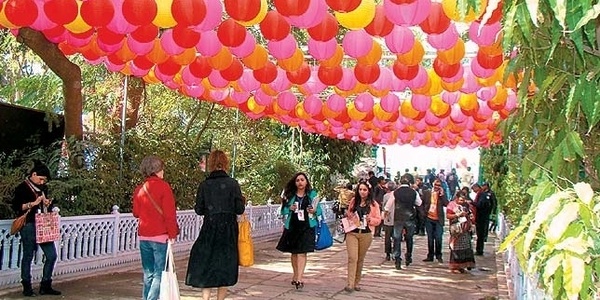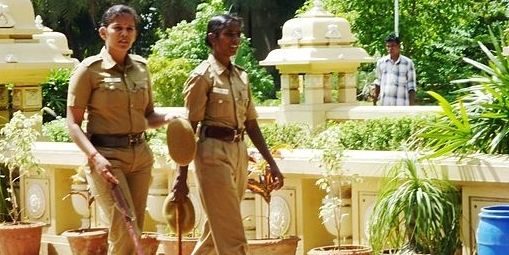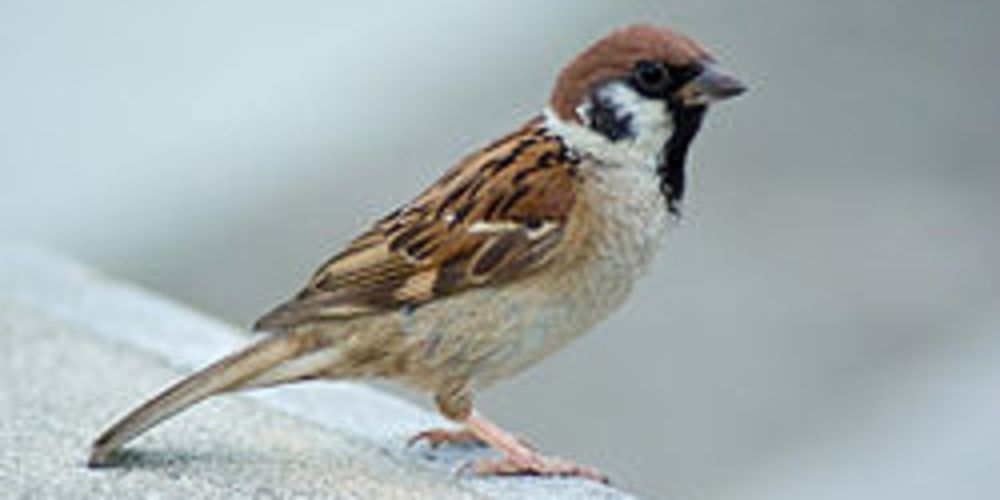Look into the Magnificence of Royal and Pink-Tinted: Jaipur
July is the perfect time to visit Jaipur's undiscovered attractions without the throngs of visitors. Escape the typical bustle and take in the breathtaking Amer Fort, the elaborate Hawa Mahal, and the tranquil Jal Mahal. Wander around the vibrant Pink City markets to look for one-of-a-kind handicrafts and try some delectable regional fare. Don't pass up the opportunity to take in a soothing Ayurvedic massage at a nearby spa or see a traditional Rajasthani puppet play.Jaipur, a city renowned for its vivid culture and extensive history, has more to offer than just its well-known sites. Discover some lesser-known locations this July that offer a distinctive experience.
Galta Ji Temple ~
(Source Of The Image~ Google Images)
Known as the Monkey Temple, it has holy water tanks and natural springs. With breathtaking vistas, the temple complex is tucked away in the Aravalli hills. Galta Ji is open daily from dawn until dusk. The temple doesn't charge entrance, but if you bring a camera or phone, you'll need to pay 50 rupees for a photography permission. A ticket or receipt serving as evidence of purchase will be given to you. The kiosks next to Galta Gate sell fruit and bags of nuts as offerings for the monkeys. Just be warned that the monkeys will climb all over you if you have food!
Panna Meena Ka Kund ~
(Source Of The Image~ Google Images)
A medieval stepwell called Panna Meena Ka Kund is situated close to Amer Fort. It was constructed in the sixteenth century and features beautiful geometric designs and architecture. For those who love photography, this location is ideal. For the fact of the approximately 2000 step-wells in India, over 100 are located in Rajasthan itself . Among its well-preserved stepwells is the Panna Meena Ka Kund, which is well-known. Panna Mian Kund, Panna Meena Baori, and Panna Meena Bawri are some additional names for Panna Meena ka Kund. The only stepwell in Jaipur that has been totally rebuilt and is in use is Panna Meena Kund. It comes from a bygone era without piped water. It has long facilitated the villagers' access to drinking water. The Baori, often referred to as the Bawri, were an essential part of the surrounding community and society. It was a dependable supply of potable water, particularly in dry spells. There is an eight-story stepwell with a set of steps that leads to water at any level. Even by itself, Panna Meena Kund is gorgeous!
Jawahar Circle Garden ~
(Source Of The Image~ Google Images)
One of the biggest circular parks in Asia is called Jawawar Circle Garden. It has rose gardens, jogging paths, and melodic fountains. Situated close to Jaipur International Airport, the park provides several running pathways and is a great spot to unwind in the evening.With 270 distinct water effects and 300 lights, the park's musical fountain is a sight to behold. It is the main attraction. The water in the fountain can reach a height of 25 feet. Every day at 7 p.m., the park hosts a fountain display with creative illumination. Undoubtedly, a visit is worthwhile.
Anokhi Museum of Hand Printing ~
(Source Of The Image~ Google Images)
The goal of the Anokhi Museum of Hand Printing is to conserve age-old block printing methods. Situated next to Amer Fort in a renovated haveli, it provides workshops and exhibitions that highlight this age-old craft. The 400-year-old Chanwar Palki Walon ki Haveli, now home to the Anokhi Museum of Hand Printing, is a rare place to witness the beauty of hand printing using natural dyes. UNESCO awarded the haveli's renovation a "Cultural Heritage Conservation" recognition in 2000. Discover the instruments and methods utilized to produce these one-of-a-kind, hand-painted designs with modern patterns. The management of the museum offers special workshops on block carving and hand printing upon request. A variety of handcrafted "Anokhi" products, such as textiles, jewelry, home furnishings, and cards, are available in the museum's souvenir store. Take a piece of this exquisite art form home with you after witnessing its magnificence.
Sambhar Lake ~
(Source Of The Image~ Google Images)
The largest saltwater inland lake in India is called Sambhar Lake, and it's 80 kilometers from Jaipur. With flamingos and other migrating birds frequenting the area, it's a bird watcher's paradise. The lake is also significant historically, going all the way back to the Mahabharata. Tens of thousands of flamingos and other migrating birds from northern Asia and Siberia visit the Sambhar Lake, India's largest saline wetland, which is also listed as a Ramsar Site, a wetland of international importance, from November to February. The lake bursts into excitement in July during the arrival of the monsoon, accompanied by the singing of several bird species, the most prevalent ones being coots, redshanks, sandpipers, and black-winged stilts. In addition, foxes and blue bulls are allowed to graze freely over the 24,000 hectares.
Sambhar town was transformed into a plain of precious metals by the Goddess Shakambhari Devi, the Chauhan Rajputs' tutelary deity, according to a well-known mythology surrounding the Shakambhari Mata Temple. The locals pleaded to the Goddess to revoke the blessing since they thought it would spark never-ending disputes. She complied by turning the lake from valuable metal to salt. This is where the Salt Lake is said to have originated, and a temple dedicated to her is located in the village of Sirthula, 15 kilometers from Sambhar town, beneath a rocky outcrop thatjuts into the lake. One of the three shakhipeeths attributed to Mother Shakambhari is the 2,500-year-old temple devoted to the goddess Shakambhari, who is thought to be an incarnation of Goddess Durga. It is a venue of a grand religious fair on the days of Bhado Sudi (Shukla Paksha) Ashtami.
Nahargarh Biological Park ~
(Source Of The Image~ Google Images)
Situated approximately 12 miles from Jaipur on the Jaipur-Delhi route lies the Nahargarh Biological Park, which is a component of the Nahargarh sanctuary. It is located beneath the Aravalli mountain and covers a sizable 720 hectares. The Park's primary goal is to maintain its abundant flora and fauna, for which it is renowned. It is also an excellent location for research on the current flora and fauna and for educating the public. Ornithologists can expect to witness over 285 species of birds at Nahargarh Biological Park, with the white-naped tit being the most popular species, unique to this park.Make sure to visit Ram Sagar while you're in the Park; it's a well-known location for bird watching and a terrific way to see a variety of birds. While there, you can stay in well-known and well-equipped locations like Ganga Vilas, Gopal Vilas, and Lalit Vilas, which were once used as hunting lodges by maharajas. A visit to the Nahargarh Zoological Park is highly recommended. Here, you can see creatures like wild boar, sloth bears, Himalayan black bears, wolves, hyenas, panthers, deer, crocodiles, and Asiatic lions. For those who enjoy the outdoors and wildlife, this place is perfect.These undiscovered treasures present a another viewpoint on Jaipur's abundant natural beauty and rich history. Whether you're a history, architecture, or wildlife enthusiast, these unusual locations are worthwhile visits in July. So go ahead and plan your upcoming month !





 (1).jpeg)
